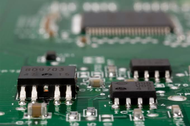Five Most Common PCB Repairs
Posted by Staff - Soldertraining on Nov 30th 2021
PCB forms the core component of modern electronics and electrical devices. These boards provide the layout to create electrical and mechanical connections between various components. Any loose connection or anomalous part can cause the PCB to malfunction and cause your equipment to go down. When choosing a partner for your PCB assembly, you need to ensure that they provide PCB repair and rework services. If they do not do so, it can cause higher production costs, material wastage, and costly delays in bringing the product to the market.
PCB repair helps eliminate the physical damage on the printed circuit board to function optimally. Rework is the process of removing a potentially defective device and replacing it with a like device. It enables the PCB assembly to fulfill initial inspection criteria and function based on the original design requirements. You can join PCB repair training course to get valuable insights into the repair process and perform it reliably and securely. The course will help you learn how to repair materials like the laminate, surface mount pads, BGA pads, plated through holes, traces, and others.
Some of the common PCB repairs are:
Physical Damage
The common PCB failures arise from physical damage to a device or its internals. You can remedy the physical damage through the remanufacturing process. You need to melt down the board's damaged sections or repair them through disassembly and reassembly. Trained and experienced professionals must repair physical damage. They need to remodel the board, resolder the components, and re-ball the conductive traces.
Poor Design
Poorly designed PCBs can lead to critical overheating issues and power failures. PCBs must have enough room to support all the components. How the components are installed is also important. The use of substandard soldering techniques can lead to loose connections, leakage, and corrosion.
Components Failure
Faulty components can lead to PCB failures. Be it capacitor, diode, or microprocessor; if any of these fail to work, it can cause the board to malfunction. To repair a faulty component, apply heat using a heat gun, solder it, and conduct rigorous testing. Some symptoms of poorly manufactured PCB components are connection issues, bending of parts, or breaking under stress.
Trace Damage
On a circuit board, the traces are the conductive pathways consisting of silver or copper. The issues in the traces are generally visible with the naked eye; however, not always. If it suffers physical damage, it can lead the significant issues on the PCB and affect its conductivity, components, and device. To repair faulty or damaged trace pathways, you have the resolder or re-ball the PCB using necessary equipment. It helps in reconnecting the broken circuit and enables electricity to flow across the board seamlessly.
Power Failure
If any component on the PCB is exposed to higher voltages than expected, it can cause it to overheat and explode. Using a power or voltage meter, you can determine electrical issues in a PCB and its components.
To Conclude:
These are five common PCB failure issues and their respective solutions to counter them. It will enable the PCB to deliver optimum performance and ensure continual delivery of functionalities.

